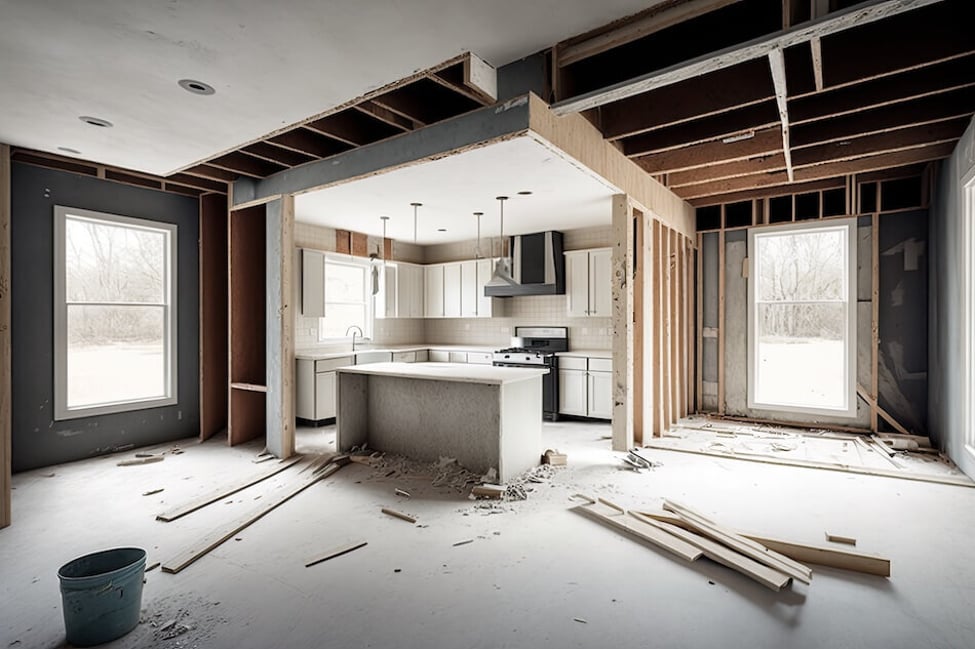Buying real estate is a journey that varies for everyone. While some seek pre-construction, new-build, or custom homes, others prefer resale properties. Nestled between these options are unfinished homes, which are partially completed when put up for sale. These homes offer unique opportunities for buyers to create their dream homes without starting from scratch, but they come with specific considerations and challenges.
Why Unfinished Homes Hit the Market
Homes can be left unfinished and put up for sale for numerous reasons, including financial constraints, life events such as divorce, illness, or death. These situations present an opportunity for buyers to acquire a partially built home, allowing them to customize the remaining construction to their preferences. However, the extent of completion can vary significantly. Some unfinished homes may already have structures, framing, and roofing in place, while others might still require extensive work, permits, and planning. Therefore, potential buyers need to realistically assess their willingness and ability to commit time and financial resources.
Working with a REALTOR®
Navigating the purchase of an unfinished home is complex and requires expert guidance. A REALTOR® plays a crucial role in this process, offering protection and ensuring all necessary clauses and conditions are included in the purchase agreement. They can help arrange inspections to verify the safety and compliance of any work already completed. While conditions are essential for buyer protection, in competitive markets, adding too many conditions can risk losing the property. Visiting the property with contractors and inspectors before making an offer can provide peace of mind and help make informed decisions quickly.
Exploring Funding Options
Cost savings is a significant advantage of purchasing an unfinished home, but financing such a purchase differs from buying a completed home. Typically, unfinished homes do not qualify for standard mortgages. Instead, buyers need construction loans, which disburse funds in stages according to the building progress. Upon completion, these loans can convert into standard mortgages. For those who already own a property, options like a home equity line of credit can be explored to finance the construction. It is vital to work with mortgage experts who understand the unique financial requirements of building a home.
Securing Permits and Plans
Buyers must ensure that the seller provides all original architectural plans, permits, and relevant documentation before continuing construction. Valid permits and approved work are crucial, especially for warranty coverage and future resale. In Ontario, for example, properties may qualify for Tarion Warranty, which protects new home buyers and regulates the home building industry. Ensuring that the construction meets the necessary standards to qualify for this warranty is essential.
Engaging the Right Experts
In addition to a REALTOR® and loan specialist, buyers need to collaborate with a range of professionals to complete their unfinished homes. This includes contractors, design-builders, safety inspectors, and municipal service providers for utilities. A design-builder can be beneficial as they combine construction and design expertise, ensuring the home meets the buyer’s vision. Regular communication and matching organizational styles with these experts are key to a smooth construction process.
Planning for Delays
Unfinished homes often come with unpredictable timelines. Factors such as supply shortages, permit delays, and weather can extend the construction period. Buyers should have contingency plans, including temporary living arrangements and storage solutions, to accommodate potential delays. Securing a final occupancy permit before moving in is also necessary, depending on the stage of completion.
Active Collaboration
To truly make the house a dream home, buyers should actively participate in the construction process. This involvement includes making decisions on fixtures, layouts, and other design elements. DIY projects like painting can also help manage budgets. Ensuring open communication with contractors and expressing personal preferences clearly can lead to a home that reflects the buyer’s unique style.
Anticipating Additional Costs
Buyers should be prepared for additional costs that may arise during construction. Beyond the interior work, exterior elements such as paving, landscaping, and fencing also require investment. Keeping an open line of communication with the construction team and budgeting for these expenses is crucial.
Injecting Personal Style
Expressing personal tastes and ensuring they are reflected in the final design is important. Buyers should feel empowered to incorporate unique elements and preferences into their home, even if they differ from conventional design choices.
Purchasing an unfinished home is a significant and sometimes daunting endeavor, but it can be highly rewarding. It offers a unique opportunity to build a customized home within financial constraints. With the right team of professionals and a clear understanding of the process, buyers can turn an unfinished property into their dream home.

